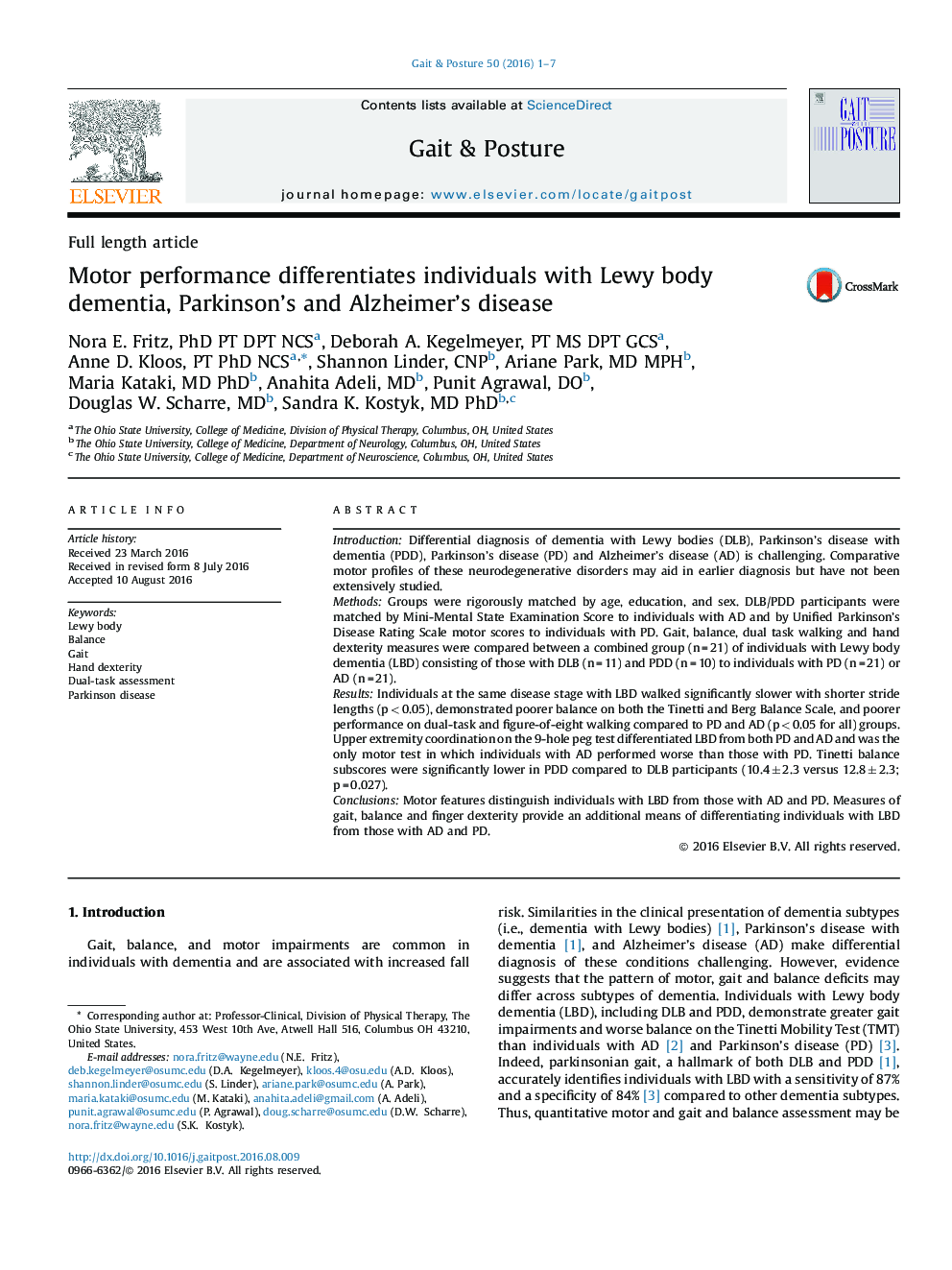| کد مقاله | کد نشریه | سال انتشار | مقاله انگلیسی | نسخه تمام متن |
|---|---|---|---|---|
| 6205284 | 1603845 | 2016 | 7 صفحه PDF | دانلود رایگان |

- When matched for disease severity, motor measures distinguish LBD from PD and AD.
- The Tinetti balance scale differentiates individuals with DLB and PD with dementia.
- The Tinetti, Berg and 9 hole peg tests differentiated LBD from both AD and PD.
- Dual task ability and figure of 8 walk differentiates LBD from AD and PD.
- Individuals with AD performed worse on the 9 hole peg test than those with PD.
IntroductionDifferential diagnosis of dementia with Lewy bodies (DLB), Parkinson's disease with dementia (PDD), Parkinson's disease (PD) and Alzheimer's disease (AD) is challenging. Comparative motor profiles of these neurodegenerative disorders may aid in earlier diagnosis but have not been extensively studied.MethodsGroups were rigorously matched by age, education, and sex. DLB/PDD participants were matched by Mini-Mental State Examination Score to individuals with AD and by Unified Parkinson's Disease Rating Scale motor scores to individuals with PD. Gait, balance, dual task walking and hand dexterity measures were compared between a combined group (n = 21) of individuals with Lewy body dementia (LBD) consisting of those with DLB (n = 11) and PDD (n = 10) to individuals with PD (n = 21) or AD (n = 21).ResultsIndividuals at the same disease stage with LBD walked significantly slower with shorter stride lengths (p < 0.05), demonstrated poorer balance on both the Tinetti and Berg Balance Scale, and poorer performance on dual-task and figure-of-eight walking compared to PD and AD (p < 0.05 for all) groups. Upper extremity coordination on the 9-hole peg test differentiated LBD from both PD and AD and was the only motor test in which individuals with AD performed worse than those with PD. Tinetti balance subscores were significantly lower in PDD compared to DLB participants (10.4 ± 2.3 versus 12.8 ± 2.3; p = 0.027).ConclusionsMotor features distinguish individuals with LBD from those with AD and PD. Measures of gait, balance and finger dexterity provide an additional means of differentiating individuals with LBD from those with AD and PD.
Journal: Gait & Posture - Volume 50, October 2016, Pages 1-7